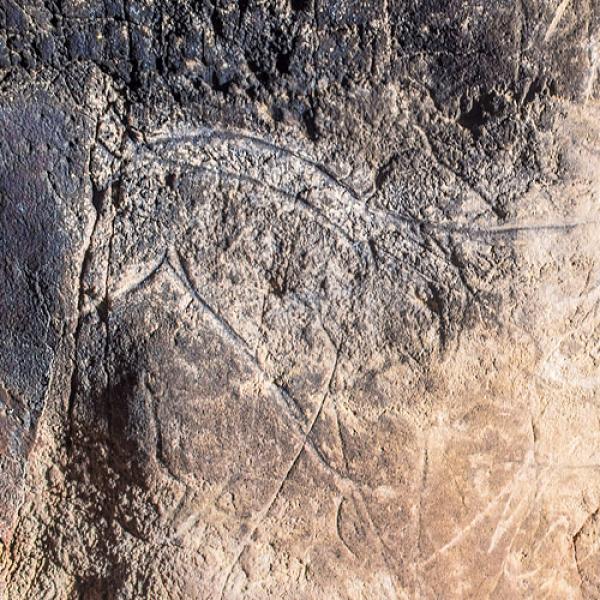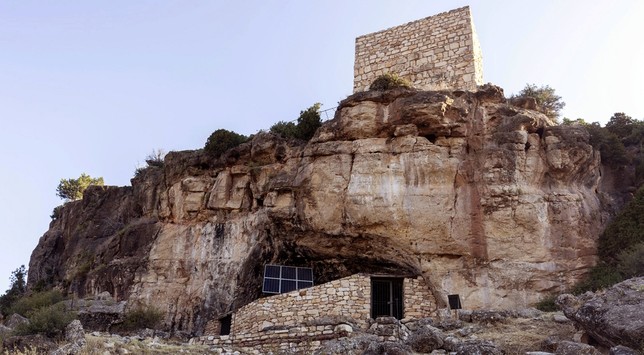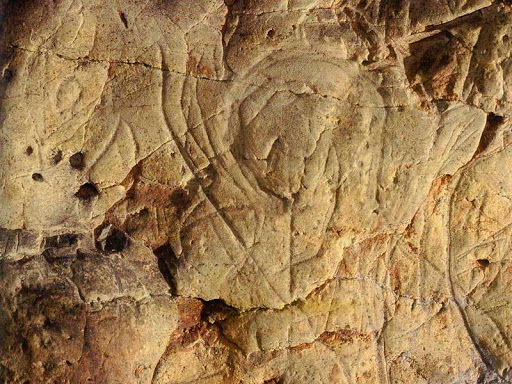Los Casares Cave
A site of global importance

Cave of the Casares
Dirección
Los Casares Cave
GPS
40.939636, -2.2922272
Cave of the Casares
The archaeological site of Los Casares, which can be visited, is composed of a prehistoric caveworld-renowned for its Palaeolithic engravingsa village vintage Spanish-Muslim that extends along the hillside and a islamic tower.
The Cave of Los Casares is located 3 kilometres north of the urban centre of Riba de Saelices. It is accessible by a dirt track that can be driven on by car.
It was used and frequented during various prehistoric and historic times, most notably during the occupation of Neanderthalsduring the Middle Palaeolithic (approximately 200,000 to 30,000 years before the present) and the engravings and paintings from the Upper PalaeolithicThe remains were made by modern humans. Remains have also been found in the interior of the site from the Chalcolithic (between 4,000 and 3,000 years old), as well as ceramics Hispano-Muslim settlements linked to the settlement of the 10th century which is located outside.
Its length is almost 265 metres. Except for the enlargements corresponding to the large entrance hall and the first large room, the rest is a tall, narrow cavern. The vestibule measures about 30 metres in maximum length and allows light from the outside to reach the bottom. The first large room is regular in shape, about 20 metres long and 6 to 7 metres wide.

Paintings and engravings
Together with other graphics found in caves in the south-eastern foothills of the Sistema Central, the Casares engravings and paintings form an inland graphic group that combines the presence of technical, thematic and stylistic features, typical of Palaeolithic art in the Iberian Peninsula and the South of France, with elements that define its regional peculiarity. Among the latter, in addition to abstract signs, which we can consider endemic to the interior of the Iberian Peninsula, there is an important very relevant group of human figures.
The meaning of these anthropomorphs and of Palaeolithic graffiti in general, beyond speculation and witticisms, is something that for the moment escapes science. In any case, the interpretations that currently enjoy the greatest consensus understand Palaeolithic "art" not as something related exclusively to rites or mystical religions, but as a communicative system with very diverse intentions and uses, known and used by Upper Palaeolithic societies in the different areas of their lives.
The Cueva de los Casares is also an important palaeontological site since, in addition to the metacarpus of Neanderthal Man discovered in the 1960s, the following have been found numerous fossil remains of animals hunted by man, such as leopards, hyenas and even cave lions, along with marmots, minks, goats, beavers, woolly rhinoceroses and mammoths, among many others, which speak of a colder period than today. Even in this cave was discovered a new speciesthe now extinct ancestor of horses, known scientifically as the Equus caballus casarensis.
Opening days
From 1 October to 31 March
Fridays, Saturdays and public holidays: from 10:30 to 17:30
Sundays: from 10:30 to 13:30
Closed: Mondays, Tuesdays and Wednesdays (excluding public holidays)
From 1 April to 31 September
Fridays, Saturdays and public holidays: from 10:30 to 13:30 and from 17:00 to 20:00
Sundays: from 10:30 to 13:30
Closed: Mondays, Tuesdays and Wednesdays (excluding public holidays)
The shifts or visiting passes are as follows:
From 1 October to 31 March
Fridays, Saturdays and public holidays (4 passes): 10:30, 12:00, 14:30 and 16:00.
Sunday (2 shows): 10:30, 12:00.
From 1 April to 30 September
Fridays, Saturdays and public holidays (4 shows): 10:30, 12:00, 17:00; 18:30.
Sunday (2 shows): 10:30 and 12:00.
It can only be visited with prior appointment.





